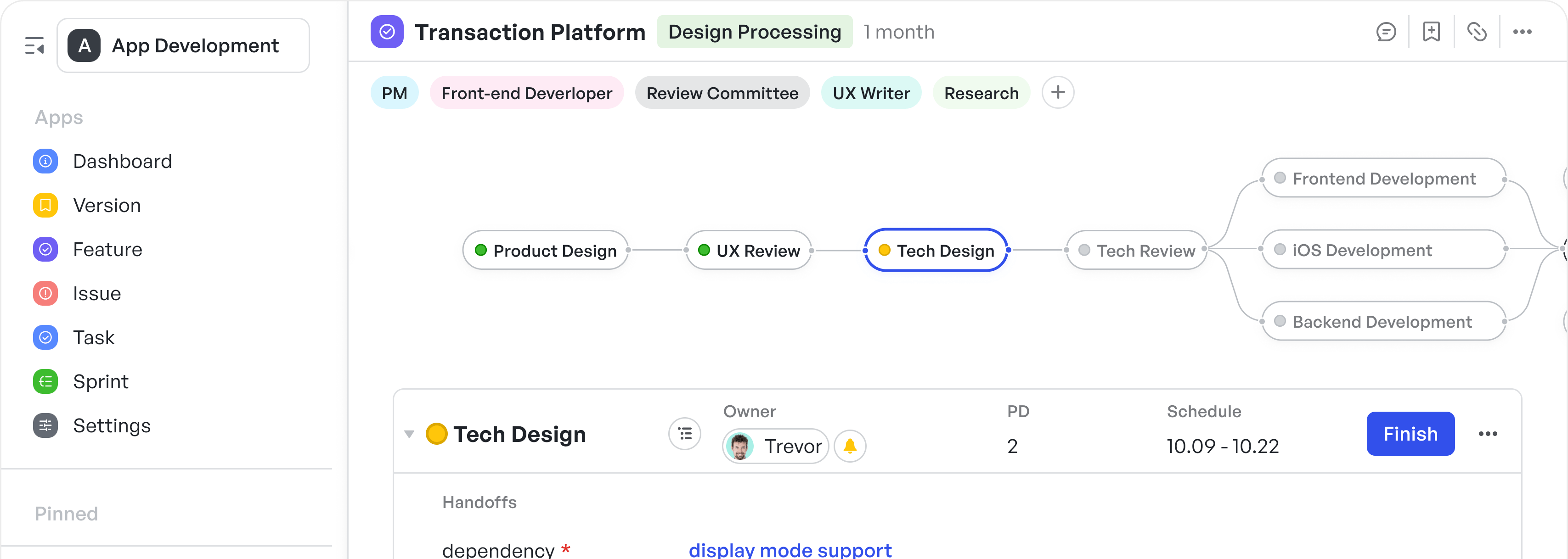Introduction: Navigating Task Dependencies in Project Management Software
This comprehensive guide is designed to explore the nuances of managing task dependencies within leading project management tools, such as Jira, Asana, and ClickUp. Readers will gain insights into setting up dependencies accurately, ensuring project elements progress logically and efficiently. As each platform offers its particular mechanisms and features for dependency mapping, we will provide you with a clear, professional breakdown of how to utilize these functionalities to optimize task management and enhance project outcomes.
Section 1: Jira’s Approach to Task Dependency Management
When tackling task dependencies in Jira, a methodical approach is crucial. As a robust project management tool, Jira offers comprehensive features that facilitate the visualization and control of task interdependencies. Here, we explore how to aptly manage these dependencies to maintain the integrity and progress of your projects.
Creating and Visualizing Dependencies in Jira
Jira enables project managers to create a visual roadmap of tasks, often employing Gantt charts to depict dependency relationships. To effectively manage task dependencies in Jira:
- Utilize the 'Issue Linking' feature to establish various dependency types, such as 'blocks,' 'is blocked by,' 'relates to,' or custom links that signify specific project needs.
250px|700px|reset
加载中,请稍后
- Leverage 'Advanced Roadmaps' to visualize tasks in a Gantt chart format, offering a clear perspective of the project's workflow.
250px|700px|reset
加载中,请稍后
- Engage in 'Dependency Mapping' by using the 'Traceability Report' or the 'Structure' plugin to track the task interrelations and their influences on one another.
250px|700px|reset
加载中,请稍后
Traceability Report
250px|700px|reset
加载中,请稍后
Structure
Best Practices for Dependency Management in Jira
Incorporate the following best practices to elevate your dependency management with Jira:
- Communication of Dependencies: Ensure that all team members are aware of existing dependencies by documenting and displaying them in Jira's visible platform.
- Monitoring Project Progress: Keep track of dependent tasks and their statuses with Jira's customizable dashboards to preempt any potential bottlenecks.
- Risk Management for Dependencies: Anticipate and mitigate risks associated with task dependencies by creating contingency plans within Jira, ensuring that dependency-related delays are accounted for in project timelines.
Translating Dependencies into Real-time Execution
A primary benefit of Jira is its ability to translate dependency diagrams into actionable tasks. With its integration capabilities, Jira can pull data from different sources, aligning task dependencies with real-time project developments. This feature assists in the orchestration of task sequences and in ensuring that teams adhere to the established dependencies.
As Jira continues to evolve with better dependency management features, it remains an indispensable tool for project managers focused on maintaining a logical and strategic task progression. For more details on setting up dependencies in Jira, refer to Atlassian’s guide.
To provide additional value, here’s a practical visual resource: the Youtube video How to Manage Dependencies in Portfolio for Jira, offering a step-by-step tutorial on managing dependencies within Jira's framework.
Section 2: How Meegle Excels in Task Dependencies Management Using Its Key Functionalities
Meegle's adept approach to managing task dependencies lies in its intelligently designed features that interact seamlessly to create a flexible and automated workflow. Here's how Meegle excels in this area using its key functionalities.
Node Dependency Configuration
Meegle's node setup is tailored to facilitate the entire project lifecycle. By configuring dependencies at the node level, it is possible to ensure that tasks are performed in a serial or parallel order. This is critical for the product development process, where some phases are logically blockers for other phases; or where there are several phases that are handled by different teams and can be carried out concurrently.
250px|700px|reset
加载中,请稍后
Tasks on Nodes
In Meegle, each node represents a task, and complex tasks can be broken down into more manageable subtasks. This granularity allows for a detailed overview of what needs to be done and how each piece fits into the larger puzzle. Such a methodical breakdown ensures that dependencies are clearly outlined and meticulously managed, making it easy for team members to understand their responsibilities and how they relate to the overall project.
250px|700px|reset
加载中,请稍后
Hierarchical View
Meegle allows users to visualize the project from a higher level by establishing a hierarchical relationship among project components such as goals, epics, features, and issues. This structure organizes project elements in a nested manner, ensuring clarity in understanding the scope and streamlining the process from the top down.
With a clearly outlined structure, it becomes significantly easier to map out dependencies because you can see how smaller tasks feed into larger goals. The dependency between an issue and a feature, or a feature and an epic, is explicitly represented, which is key to managing sequential and contingent tasks effectively.
250px|700px|reset
加载中,请稍后
Automated Configuration
Meegle automates routine processes to advance tasks without human intervention. Complex workflows can be automated by setting triggers, conditions and actions.
All four types of task dependencies can be executed through automation settings.
- Finish-to-start dependency: Task A must be completed for Task B to begin.
- Start-to-start dependency: Task A must start for Task B to start.
- Finish-to-finish dependency: Task A must be completed for Task B to completed.
- Start-to-finish dependency: Task A cannot be completed until Task B has begun.
250px|700px|reset
加载中,请稍后
250px|700px|reset
加载中,请稍后
Section 3: Streamlining Workflows with Task Dependencies in Asana
Asana, known for its user-friendly interface and powerful task management capabilities, also offers efficient ways to handle task dependencies, allowing teams to clarify task sequences and dependencies with ease.
Implementing Task Dependencies in Asana
To create a coherent and dependable workflow in Asana, follow these steps:
- Identify the dependent tasks within your project and determine their specific relationships.
- On your Asana project board, use the 'Timeline View' to visually arrange your tasks and dependencies in a clear, linear sequence.
250px|700px|reset
加载中,请稍后
Similar to Jira's Advanced Roadmaps
- Create dependencies by selecting a task and using the 'Add Dependency' feature to connect it to subsequent tasks. This will automatically signal if a prior task's delay will affect the linked tasks.
250px|700px|reset
加载中,请稍后
Enhancing Project Clarity with Asana’s Visualization
Asana’s timeline and calendar views provide a dynamic visual representation of how tasks are distributed over time and how they interconnect.
- The Timeline allows you to get a high-level view of the project and understand how changes might impact the overall plan.
- The Calendar function helps ascertain that no deadlines slip through and that dependencies are reflected in the scheduling.
Best Practices for Managing Dependencies in Asana
By adhering to these best practices, you can maximize the effectiveness of Asana’s task dependency features:
- Task Relationship Visualization: Use custom fields and sections to categorize and highlight dependencies within your broader project plan.
- Task Scheduling: Adjust dates and timelines in real-time to reflect the current project status, taking dependencies into account.
- Dependencies Communication: Leverage Asana's communication tools to ensure all team members are updated on dependency-related changes.
Additionally, to gain more visual insight into the process, watch this helpful YouTube tutorial: How to Create Dependencies Between Tasks in Asana, which demonstrates dependency management in a real-world Asana project.
Section 4: Efficient Task Management with Dependencies in ClickUp
ClickUp is quickly making a name for itself as a versatile project management tool, providing an array of features designed to cater to teams of all sizes and industries. Among its strengths is an intuitive system for managing task dependencies, ensuring clear communication and seamless project progression.
Setting Up Dependencies in ClickUp
Here’s how you can leverage ClickUp for effective dependency management:
- Begin by opening the task where you want to establish a dependency.
- Navigate to the task details and find the 'Dependencies' section within the sidebar, where you can add dependencies by selecting either 'Blocking' or 'Waiting On' to denote the nature of the dependency.
250px|700px|reset
加载中,请稍后
Utilizing Dependency Chains for Task Sequencing
ClickUp allows the creation of dependency chains, enabling a cascade of tasks to automatically update based on the completion of preceding tasks. This feature is particularly beneficial for:
- Visualizing the order of operations within a project
- Ensuring project milestones are achieved in the correct sequence
- Automatically adjusting timelines based on task progression
By constructing these dependency chains, project managers can foster a more proactive approach to managing workflows and deadlines.
250px|700px|reset
加载中,请稍后
Similar to Jira's Advanced Roadmaps and Asana's Timeline View
Maximizing ClickUp's Advanced Dependency Features
As professionals require a high level of control over their task management processes, ClickUp’s advanced dependency settings provide options for:
- Automated Reminders: Set the system to send notifications as soon as a blocking task is completed, prompting immediate action on subsequent tasks.
- Custom Dependency Types: Tailor your dependencies to match your project’s specific needs, going beyond the typical 'Blocking' and 'Waiting On' criteria.
- Comprehensive Overviews: Utilize ClickUp's 'Box View' and 'Gantt View' to get a broader understanding of your team's workload and how dependencies are impacting the overall project timeline.
To grasp how ClickUp can be utilized to its full potential for handling task dependencies, further information can be found on ClickUp's help center.
For visual learners, the following YouTube resource provides a straightforward explanation: Understanding Dependencies in ClickUp, a video tutorial showcasing how dependencies work within the ClickUp environment.
Conclusion & Comparison
Jira is highly favored for software development projects due to its robustness, integration with agile methodologies, and extensive customization capabilities. It is excellent for teams that need in-depth tracking and reporting.
Meegle is the most unique tool with less complexity of task relationships, ease of viewing and adjusting dependencies, collaboration features, integration with other tools, and overall user experience.
Asana offers a user-friendly interface with a straightforward way to create and visualize dependencies. It’s great for teams that prioritize ease of use and clarity.
ClickUp is versatile and all-encompassing, providing a wealth of features, including dependency management that suits a wide range of project types. It’s a good fit for teams looking for a balance between depth and usability.
You may also interested in





